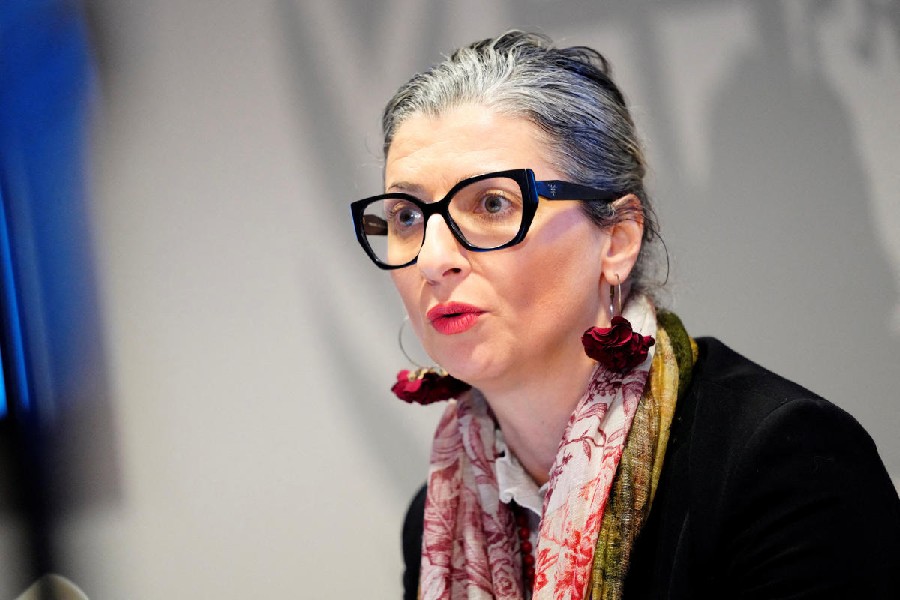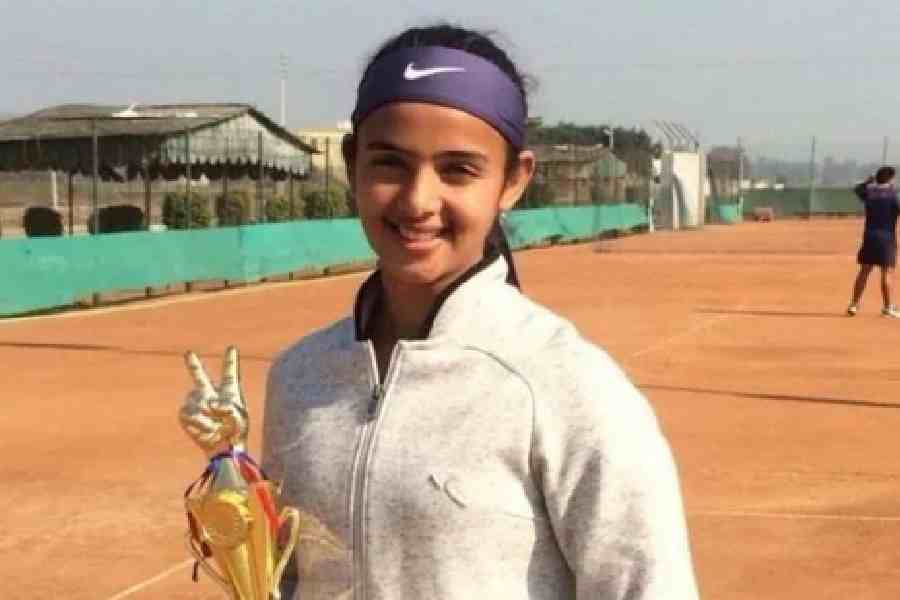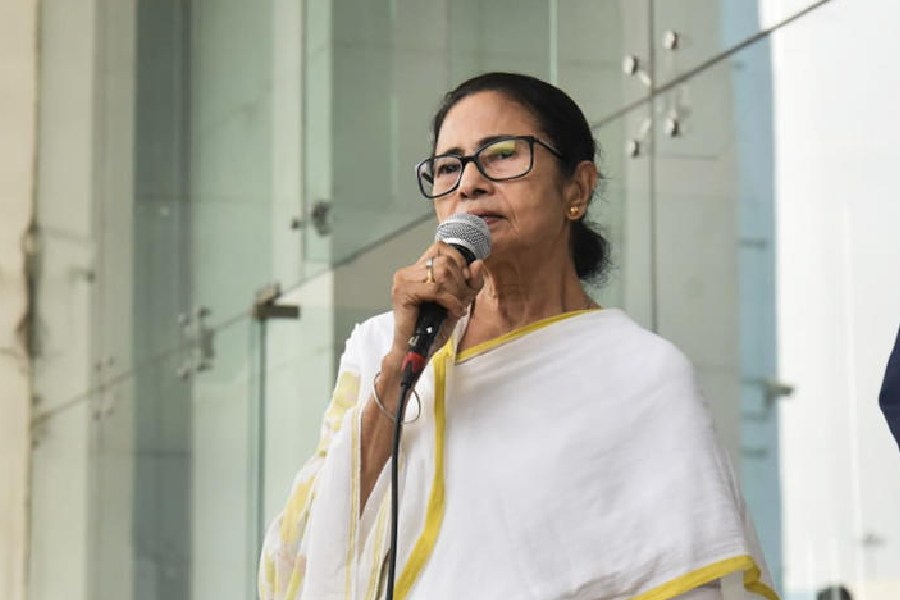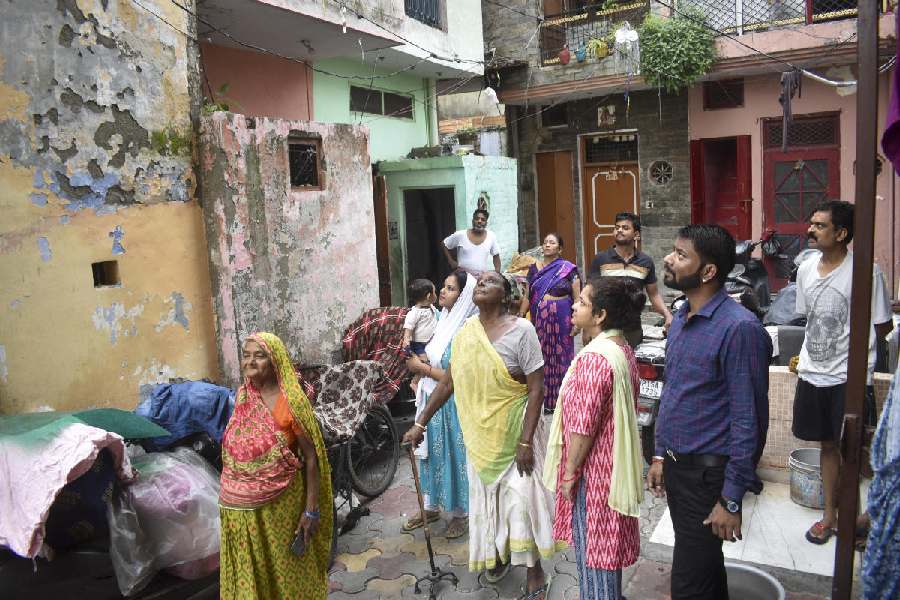.jpg)
When we drop in at Anamika Khanna’s workshop in Lansdowne on Wednesday afternoon, the designer is in full Diwali mode, dressed traditional in a pale peach salwar kameez with a matching bindi. Before heading to the mandir for the Diwali puja, she sits down for a chat with t2 on Sonam Kapoor’s look in Prem Ratan Dhan Payo. Having had “lots of fun” doing Sonam’s costumes for the film, Anamika is waiting to see the results on screen. “I’m very nervous,” she smiles, as she takes us through the lookbook and shares why dressing up one of Bollywood’s most stylish actresses is an easy job for her.
Working on the look
This all started almost one-and-a-half years back. I had gone for a sitting with the director of the film (Sooraj Barjatya) to find out what the whole movie was all about and he had this dream vision about Sonam. The look is quite varied through the film, it’s not like one look. The character goes through several stages, being at several spaces, all sorts of situations. So each look goes with what setting she is in… whether she is in college to whether she’s in the palace, whether it’s an occasion going on or whether she’s at home. So it’s gone from scene to scene….
The look is very traditional. Then there is the challenge that she’s actually a city-bred modern girl and she comes into this traditional setting, so you have to strike the balance. I have enjoyed myself doing this film, we had a lot of freedom. I could do a lot more than I have ever done… and Indian clothes is something that we love doing anyways.
Sonam always has inputs, the director also had inputs, also the art director… everybody had inputs. There’s a scene where people are dancing in a group. So how to make Sonam stand out… what are they wearing, in the context of the backdrop what colour should she wear, these things always matter. There’s a scene where we even discussed what Salman (Khan) is wearing so that they make sense with each other. For me when I am doing a film, the character is very important. Moods also matter, if she’s in a vibrant, happy mood or she is sad… that makes a difference to the colour palette and how they are going to picturise the scene. Sometimes the lights are darker, and the whole backdrop is dark, so then the protagonist can’t wear something that is very bright and vibrant, you have to fit into the scene.
Standout scenes
There is this look where Sonam is being weighed… she’s in the palace and they’re actually weighing her, that’s the custom. That’s a very important scene where she’s all dressed up in a traditional outfit of Rajasthan. That’s a very important scene where we’ve done the lehnga look. Then there is the scene with the lilac sari which you see in the posters, that’s also a very important look. The director wanted her to look extremely ethereal, extremely vulnerable and beautiful. So it’s really gone from scene to scene… it’s very specific.
She’s actually a city girl and she moves into this scenario, so there’s a scene where they are reminiscing about something in college, so that’s a very casual look. Otherwise the look is very traditional… saris and lehngas… lots of lehngas actually. The lehngas are also made according to the occasions. There’s a football match where she had to wear a lehnga and we had to really struggle because she gets wet, and it had to be weightless because she’s receiving guests… it’s a tricky one but turned out to be okay.
Fave look
We have done this seven-coloured lehnga, a traditional Rajasthani lehnga called Satranga. Basically, it’s a traditional concept where you put together the lehnga in seven panels of seven different colours, very vibrant… and then on it we have done gota ka kaam. She’s wearing it in the scene where she’s being weighed, which is a very ornate, heavy scene. There are a few scenes in the film like that, like the tilak ceremony, where she’s in full finery.

Dressing Sonam
Sonam enjoys dressing up, so we’ve enjoyed doing that. Sonam always has inputs, because she’s always quite clear about the look. But it’s easy because we understand each other. So we always worked together. Before every scene, I told her that this was the look I was thinking. We have had fun. Sonam loves to dress up and so you can put as much on her and because of her height, stature and personality, you can get away with it.
You know the most important thing is, suppose you’re trying a new look, you’re not sure of it, the look might fall flat. With Sonam, she knows what she’s doing. Plus she has the height, the beauty, the stature to pull off things that others might not. Whether she’s wearing a large gown or a traditional sari, she gets away with it. And she experiments. The interesting thing is, if say there’s a scene that requires her to wear denims, she knows the shoes she’s going to wear. She herself has a huge collection and what I like best about Sonam is that she doesn’t mind using her personal stuff for a film.
Sonam is a clotheshorse, you put anything on her and it looks good. Even at home when she’s right out of bed, she’s got her glasses on and her hair is up…. I’ve seen her like that and she looks beautiful even then. She’s one of those girls who look beautiful even when she’s sleeping.

The traditional space
I think the whole traditional space is going to be a very strong direction. Because sometimes we are forgetting the traditional space and trying to do modern things and mix them up. But I think the fact that we have kept the traditional space here is interesting. I’m not trying to experiment here. It’s not about fashion, it’s about the film. The costumes go with the film, but I know that once Sonam has done it, it automatically becomes fashion… like I can’t forget Delhi-6, how many people wanted the printed kurtas, the printed dupattas.
Films with Sonam
All the films that I have done with Sonam have different looks. Aisha we’ve had lots of fun because there were lots of looks. Delhi-6 and Bhaag Milkha Bhaag were very simple, because she came from a certain space and we couldn’t really do much. In Mausam she goes through various stages and there are about a hundred looks, shot over a very long time. This one (PRDP) is my favourite. And the very fact that the director believed in me… when you get a message from the director saying ‘You’ve brought my dream to vision’, it feels good.
Films are not my forte
I find films very difficult. I work with Sonam only because she makes my work easy and she doesn’t give me much choice by the way. She doesn’t ask, she tells me, ‘Ana you’re doing this film’. Sonam is different… she is a friend. But films are not my forte. For me it’s fashion, it’s not about theatre or costumes or drama. Also the amount of time you need to put into a film, I find that difficult. For Mausam I spent a lot of time on the sets, Delhi-6 was easy, I did the whole thing over one phone call… it was just blind faith. This film (PRDP) I didn’t have to struggle too much, it was very organised. They gave me the scene, they gave me the colours and I worked on that with full freedom.
Bolly fashionistas
From 10 years ago to now we have seen a huge transformation in the actresses, who have started really taking care of what they wear and their appearances and have much better bodies and everyone has got a stylist as well. So I feel there is a big transition. The ladies are much more stylish, much cooler and ready to experiment.
As told to Smita Roy Chowdhury

.jpg)









